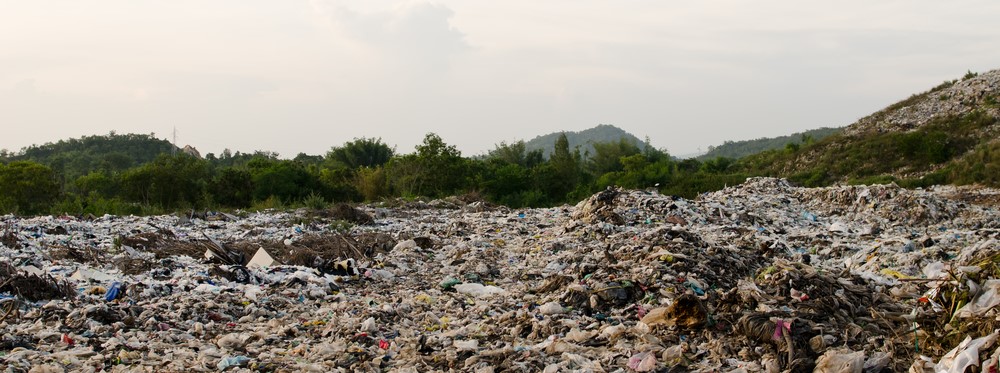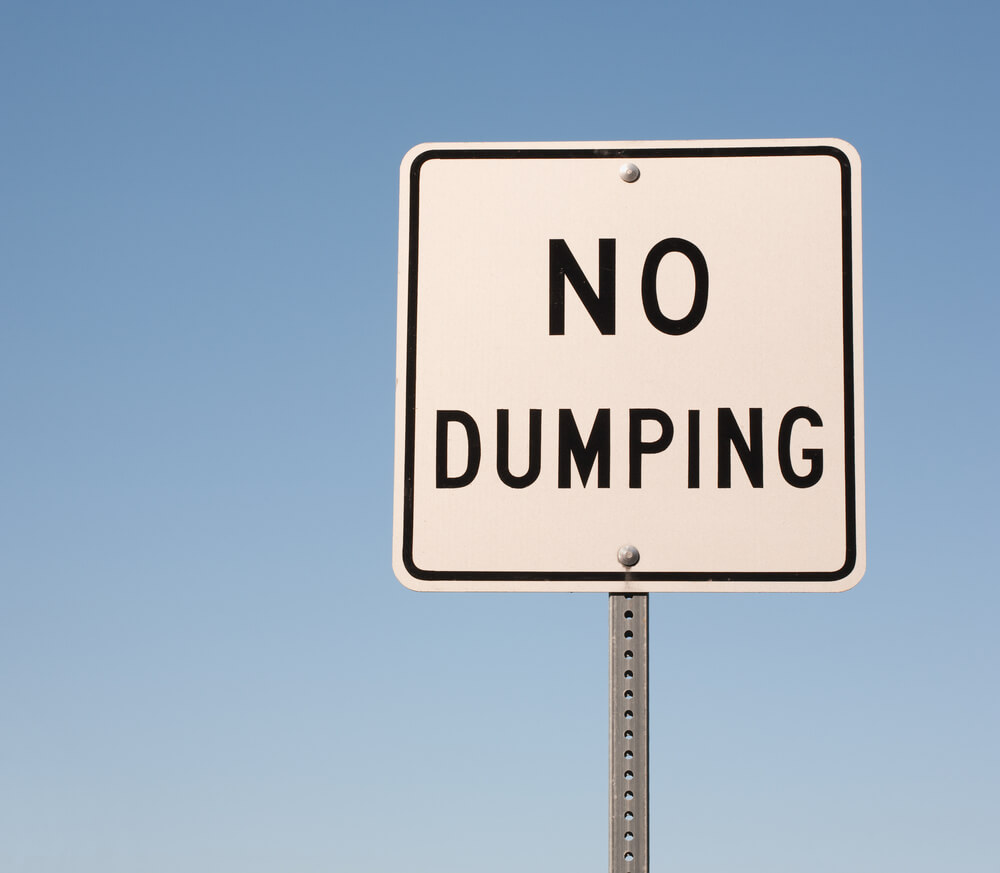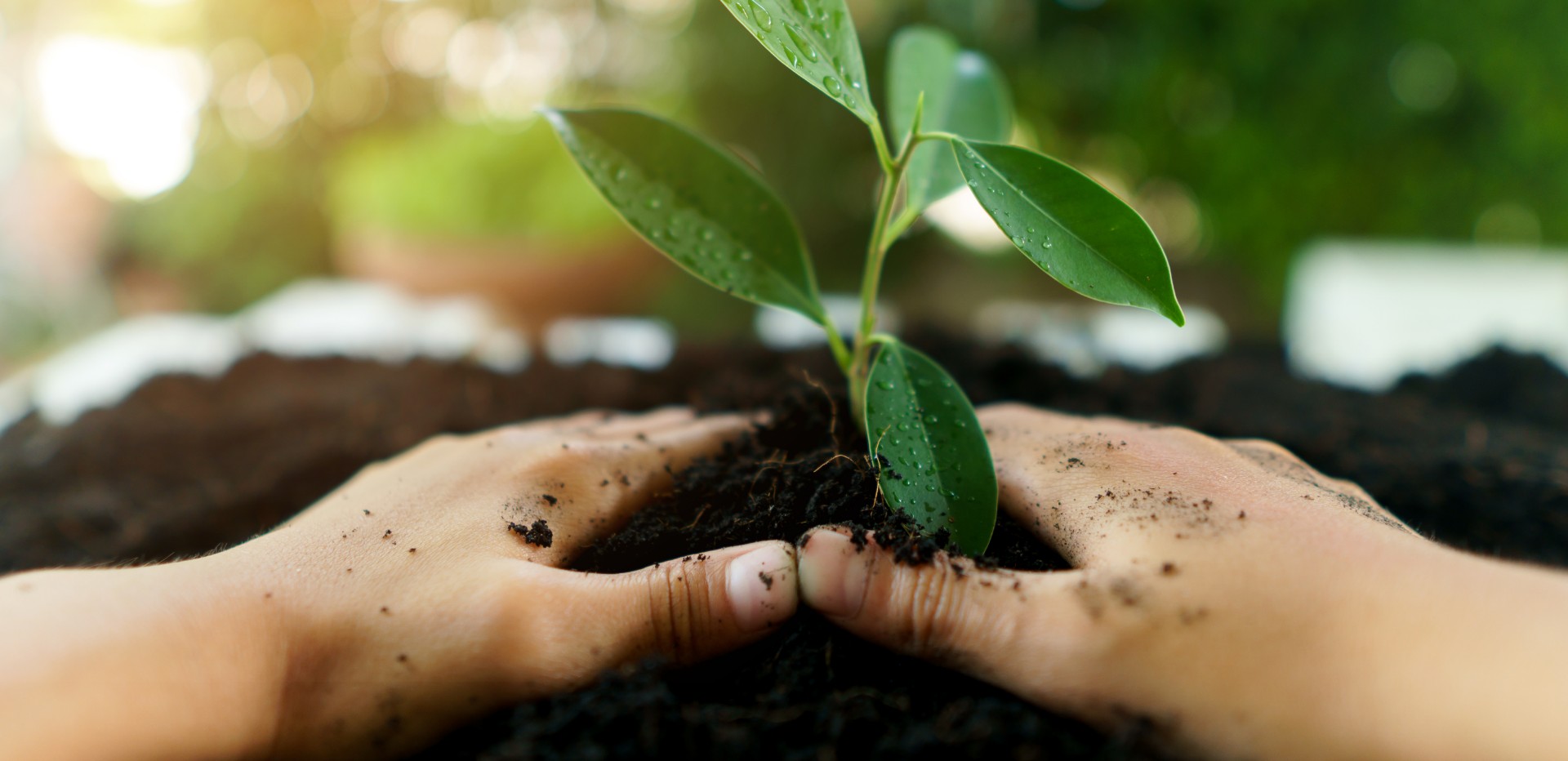Land pollution — or the degradation of our soil by outside contaminants — is largely the result of unsustainable agricultural practices, the improper disposal of waste (both hazardous and non-hazardous), mining (often called “mineral extraction”), illegal dumping and littering.
In the 21st century, there isn’t a single surface or space on Earth that hasn’t in some way been impacted by pollution. The consequences are far-reaching for both the environment and human health.
While the prevention of land pollution on a large scale will require changes in policy and regulation, there are steps that individuals can take in their daily lives to help prevent land pollution.
What is Land Pollution?
Land pollution refers to the deterioration of the earth’s land surfaces at and below ground level. It is caused by the accumulation of solid and liquid waste materials that contaminate groundwater and soil. These waste materials are often referred to as municipal solid waste (MSW), which includes both hazardous and non-hazardous waste.
As different waste materials and pollutants like heavy metals, pesticides, plastic, litter and pharmaceuticals sit on top of and leach into our soil, they change and degrade its natural composition. Over time, some pollutants can also go through a chemical transformation, creating secondary pollutants like fumaric and phthalic acids.
The permeability of the soil formations below the waste can increase or reduce the risk of land pollution. The higher the permeability of the soil, the more likely that land pollution will occur. Meanwhile, extreme weather events like hurricanes and floods can exacerbate the effects of land pollution as they disperse or concentrate certain pollutants.
The Main Causes of Land Pollution
While there are many causes of land pollution, the main contributors include litter, waste, urbanization, construction, mining, extraction and agriculture. Let’s dive into how these different issues lead to increased land pollution.
1. Litter and Waste
Litter
Littering, the improper disposal of waste products, is unfortunately common. According to a study by Litter in America, litter cleanup costs the U.S. more than an estimated $11.5 billion each year. Every cigarette butt tossed on the ground or food wrapper tossed out of a car window is a small contribution to a monumental issue. According to the 2020 Keep America Beautiful study, there is an estimated 50 billion pieces of litter along U.S. roadways and waterways. Not all litter, however, is intentional. A large volume of litter also comes from unsecured items that fall off the back of vehicles or out of trash receptacles.
Illegal dumping also contributes to land pollution. Oftentimes people will dump waste illegally in places such as forests, open fields and ditches rather than in approved dumping areas. Common types of illegally dumped waste include asbestos waste, cars and waste that can be recycled or reused.
All litter, whether intentional or not, causes pollution by releasing chemicals and microparticles as it degrades.
Waste
Even if you throw your trash into the can and take it out to be picked up by the garbage truck, its journey is not complete. Your trash has to go somewhere and where it typically goes is a landfill. When not managed properly, your waste can also contribute to land pollution.
For example, it wasn’t until the mid-20th century that solid wastes were collected with the environment in mind. Prior to that, waste was typically left on top of the ground, which resulted in rats, mosquitoes and other disease infestations, as well as foul smells and windblown debris.
There are now significantly safer practices for disposing of waste, including the recovery and use of landfill gas for electricity.
The Texas Disposal Systems Landfill, located just outside of Austin, Texas, is unique by design and combines natural and manmade barriers to meet stringent environmental protection regulations. The landfill structure features a performance-based linear system with a leachate collection system and thick re-compacted clay sidewall liners. The liner system easily meets the standards of the performance-based landfill liner system currently required by both the EPA and the TCEQ.
2. Urbanization and Construction
Large quantities of people living close together, producing trash and littering in a dense area does inevitably lead to land pollution. To accommodate our increasing population, construction activities also occur, which result in large waste materials, such as metal, plastic, wood and bricks.
When these materials are not properly disposed of, it contributes to the land pollution of that area. To help reduce the environmental impact of construction sites, it’s important to work with partners that offer comprehensive solutions to achieve cost-effective construction recycling and waste disposal plans.
TDS offers a variety of builder solution services aimed at helping builders achieve easy and cost-effective construction recycling and waste disposal plans. Our services ensure builders remain in compliance with both city ordinances and a project’s plan and include roll-off dumpsters, concrete recycling, scrap metal recycling and more.
3. Mining and Extraction
Mining is the extraction of minerals and other geological materials from the ground, which are then used for a wide range of purposes including but not limited to producing gasoline for automobiles, generating electricity and selling materials such as gold and silver.
This extraction and the methods used, however, deplete the earth of its natural resources and cause damage and land pollution in its wake. It also frequently damages the surrounding area’s natural ecosystems, altering the landscape, destroying natural habitats for wildlife and ultimately reducing biodiversity.
For example, coal mining often uses acid mine drainage (AMD) to help extract coal from its surroundings. When the runoff of acid used in this method finds its way into local natural water supplies and sources, it has a chemical reaction with the surrounding rocks and sand and creates sulfuric acid. Sulfuric acid is toxic not only to humans but to most other plants and wildlife as well.
Other types of extraction, such as drilling for oil, have also caused massive damage to local ecosystems when operations go wrong and are a major contributor to ocean pollution. Cases like these are why finding alternatives for energy (think solar and wind power) that aren’t mined from the earth’s surface is such a vital part of efforts to reduce land pollution moving forward.
4. Agriculture
Agriculture is foundational for both everyday life, as well as the economy as a whole. It also, however, can have profound effects on the planet. Agricultural pollution occurs when contamination created as a by-product of raising livestock and growing food crops is released into the environment and the contamination is vast. Major contributors to agricultural-related land pollution include run-off from pesticides, herbicides, fertilizer and animal waste.
Unsustainable farming practices such as intensive cultivation and overgrazing can also strip the land of its natural nutrients, leaving it no longer viable for future crops unless it is restored.
Effects of Land Pollution
Land pollution touches essentially every area of the living world, including:
- Contamination of drinking water
- Polluted soil, which leads to a loss of fertile land for agriculture and a reduction in the availability of food
- Climate change, which causes an onslaught of disastrous problems, including flash floods and irregular rainfalls
- The endangerment and extinction of species in wildlife
- Habitat destruction, where animals and plants wiped out in certain areas
- Habitat shifting, where animals are forced to flee where they live in order to survive
- An increase in wildfires due to polluted areas often becoming very dry
- Increased air pollution, which burning waste contributes to
- Increased soil pollutants can enter the body through the food chain and cause health issues
- Increased human health issues, including cancer, respiratory illnesses and congenital disabilities, caused by exposure to harmful chemicals
How to Prevent Land Pollution
Given the disastrous effects of land pollution, taking preventive measures to reduce its impact moving forward is important. Finding solutions to land pollution is not a matter of discovering a silver bullet — it will require efforts on multiple fronts.
Sustainable Agricultural Practices
Given that the use of pesticides and chemicals in farming and agriculture greatly contributes to land pollution, finding alternatives will help to reduce the environmental impact. Farmers, for instance, can use natural ingredients by switching from bio-fertilizers to manure or enrolling in programs that provide education and resources regarding sustainable farming.
On the individual level, supporting environmentally-conscious, local farmers at your closest farmer’s market or local grocery store can help to build up business for farmers with more sustainable farming practices. Another option is to contribute to or volunteer in an urban garden in your neighborhood.
Reforestation
Reforestation involves replanting an area with trees. This can be needed for areas that have experienced wildfires, for instance, or where trees have been chopped down and milled. This process helps to bind the soil, which helps to protect it from land pollution and prevents soil erosion and flooding.
Solid Waste Treatments
When solid waste is not properly treated it can increase the level of toxic chemicals and hazardous substances in soil. Chemical treatment methods under a controlled environment can help reduce land pollution. This solid waste treatment method includes neutralization. This treatment alters the pH level of waste before it gets dumped into landfills.
Reduce, Reuse and Recycle
At the individual level, there are many things we can do to reduce our contribution to land pollution. One of the simplest ways to do this is to reuse or recycle items so that you aren’t creating waste out of a material or item that still has a purpose. With the growing awareness around what can be recycled and an increase in recycling carts in many cities, it has never been easier to recycle.
Composting
Another way to reduce land pollution is through composting. According to the United States Environmental Protection Agency, food scraps and yard waste together currently make up more than 30% of what we throw away and could be composted instead. Minimizing and repurposing waste helps preserve the environment.
Where Can I Find More Land Pollution Information?
There is a constantly growing body of literature on the causes and effects of land pollution, as well as preventative and restorative measures being taken. Here is a starter list of both classic and new educational resources.
Actionable Resources for Land Pollution:
- Learn what is recyclable (for Central Texas residents in particular)
- Discover how to be an environmental steward
- Read our guide to how to reduce waste during the holidays
- Research types of composting and how to compost at home
- Teach your kids how to recycle
- Learn how to recycle styrofoam and how to recycle plastic bags
- Learn what waste items go where in the TDS Waste Wizard available in the Apple App Store and Google Play
Reports on Land Pollution:
- The Intergovernmental Science-Policy Platform on Biodiversity and Ecosystem Services (IPBES) Land Degradation and Restoration Assessment Report (2018).
- The EPA’s National Overview: Facts and Figures on Materials, Wastes, and Recycling and Report on the Environment: Contaminated Land
- The Food & Agriculture Organization of the United Nations Global Assessment of Soil Pollution (2021).
- The Intergovernmental Panel on Climate Change’s Special Report on Climate Change & Land Ch. 4: Land Degradation (2019).
Books on Land Pollution:
Buy locally or used to reduce your environmental impact.
- Silent Spring by Rachel Carson: Published in 1962, Silent Spring altered public awareness about the then-common pesticide DDT and sparked revolutionary policy changes that protected natural resources.
- A Sand County Almanac by Aldo Leopold: Part natural history, part personal essay, The Sand County Almanac follows Leopold as he explores the natural ecosystem of his native Wisconsin as well as other areas. Another classic, it was published in 1949 and helped spur the modern environmentalist movement.
- The Sixth Extinction by Elizabeth Kolbert: If you’re tired of hearing about the “next mass extinction” without really knowing what it’s about, Kolbert’s book is a data-backed look at previous mass extinctions as a way of teaching us about our current mass extinction.
- The Worst Hard Time by Timothy Egan: Egan shares the stories of individuals who survived The Dust Bowl, a period of severe dust storms that ravaged the prairies during the 1930s. The dust storms were caused primarily by unsustainable agricultural practices
- The Story of Stuff by Annie Leonard: An in-depth look at the impact of overconsumption, The Story of Stuff follows “stuff” from its creation in factories to its final resting place in a landfill in an attempt to promote awareness and sustainable practices.
Dispose of Waste the Safe, Smart Way with TDS
At Texas Disposal Systems (TDS), we recognize that we are in a unique position to help reduce land pollution for Texans. With over 2,000 acres of land and the state’s first totally integrated facility, we are one of the largest independently owned solid waste collection, processing and disposal companies in the nation. And we are dedicated to helping the Texas environment thrive.
Our efforts to reduce the impact of air pollution, water pollution and land pollution are extensive and include:
- Best practices in terms of landfill management
- Diverting reusable and recyclable materials from our landfill via our Material Recovery Facilities (approximately 441,400 tons per year!)
- Use of recycled materials in the construction of roads, buildings and topsoil initiatives across our facilities
- Large-scale, on-site composting
- Recycling and sales outlet facilities
- Working toward a closed-loop energy solution using the methane emitted from our landfill
- The planting of trees and shrubs throughout our facilities
- Supporting environmentally sound construction through our building services, including concrete recycling, scrap metal processing and more
- Working with local businesses, including the Barton Springs/Edwards Aquifer Conservation District, H-E-B, Austin Bergstrom International Airport, Keep Austin Beautiful, Habitat for Humanity
- And so much more…
With an eye to the present and future health of Texans, TDS strives to give Texas residents and businesses access to more holistic waste disposal solutions. We are more than just a waste service provider.
Ready to get started? Learn more about our residential and commercial waste collection solutions today.



